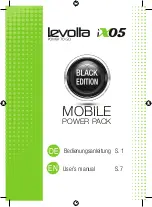
7
GB/IE/CY
Introduction / General safety advice
Technical information
Nominal voltage:
230 V ~ 50 Hz
Power consumption: max. 2.000 W
Air volumes:
Setting I: ca. 300 l / min.
Setting II: ca. 500 l / min.
Temperatures
(Jet outlet nozzle):
Setting I: ca. 350 °C
Setting II: ca. 550 °C
Protection class:
II /
The sound pressure level (A) of the device is typically
less than 70 dB (A).
General safety advice
WARNING!
Read all the safety advice
and instructions!
Failure to observe the safety
advice and instructions may result in electric shock,
fire and / or serious injury.
KEEP ALL THE SAFETY ADVICE AND INSTRUC-
TIONS IN A SAFE PLACE FOR FUTURE REFER-
ENCE! THE TERM “ELECTRICAL TOOL” USED
IN THE SAFETY ADVICE REFERS TO ELECTRICAL
TOOLS POWERED BY MAINS ELECTRICITY (BY
MEANS OF A MAINS LEAD) AND ELECTRICAL
TOOLS POWERED BY RECHARGEABLE BATTER-
IES (WITHOUT A MAINS LEAD).
1.
Workplace safety
a)
Keep your working area clean and
clutter-free.
Untidy or poorly lit working
areas can lead to accidents.
b)
Do not work with the device
in potentially explosive envi-
ronments in which there are
inflammable liquids, gases or dusts.
Electrical power tools create sparks, which can
ignite dusts or fumes.
c)
Keep children and other
people away while you are
operating the electrical tool.
Distractions can cause you to lose control of
the device.
2.
Electrical safety
To avoid danger to
life from electric shock:
a)
The mains plug on the device must
match the mains socket. The plug must
not be modified in any way. Do not use
an adapter plug with devices fitted with
a protective earth.
Unmodified plugs and
matching sockets reduce the risk of electric shock.
b)
Avoid touching earthed surfaces such as
pipes, radiators, ovens and refrigerators
with any part of your body.
There is an in-
creased risk of electric shock if your body is earthed.
c)
Keep the device away from rain or
moisture.
Water entering an electrical device
increases the risk of electric shock.
d)
Do not use the mains lead for
any purpose for which it was
not intended, e.g. to carry the
device, to hang up the device or to pull
the mains plug out of the mains socket.
Keep the mains lead away from heat,
oil, sharp edges or moving parts of
the device.
Damaged or tangled mains
leads increase the risk of electric shock.
e)
When working outdoors with an elec-
trical power tool always use extension
cables that are also approved for use
outdoors.
The use of an extension cable suit-
able for outdoor use reduces the risk of electric
shock.
f)
Use a residual current device (RCD)
for protection if operating the electri-
cal power tool in a moist environment
is unavoidable.
The use of an RCD reduces
the risk of electric shock.







































